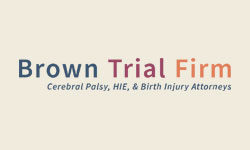SSI vs SSDI Disability Programs
SSI and SSDI are two of the largest federal programs that exist to help those with disabilities.
Supplemental Security Income (SSI): provides income for people who are disabled and have minimal financial resources.
Social Security Disability Insurance (SSDI): supports people who are disabled and have a qualifying work history either through themselves or through a family member.
Children with Cerebral Palsy Disability May Qualify for SSI Aid
Children with severe forms of Cerebral Palsy may qualify for SSI. The SSI places limits on the income and assets that qualify a family for benefits. If a family earns more income or has greater assets than described by the SSI, then the child will not be eligible for benefits through the SSI.
The Social Security Administration (SSA) outlines the current income requirements here.
If the income and assets requirements are met by the family, then qualifying for SSI depends on the child’s medical condition.
For younger children, the SSI will compare the child’s capabilities against the normal behavioral and developmental milestones for children of the same age. Factors like sitting up, holding up the head, grasping, rolling over, crawling, and so on may help inform the decision.
For older children, the SSI will generally look at mobility and independence factors. For example, if a child is able to get around with the use of a cane, then that may not qualify. But, if a child requires the use of two hands on a walker to get around, that may qualify.
Typically, all children (young and older) who qualify for SSI must have Cerebral Palsy that severely affects at least two or more extremities. More mild to moderate conditions do not usually qualify.
However, for children with moderate to severe CP, the SSI program offers “presumptive disability” benefits, which means that you may be able to start receiving aid immediately. Presumptive disability is granted to expedite how quickly a family obtains aid in circumstances when the child is likely to qualify upon later examination.
Getting help for a child with HIE or Cerebral Palsy
can make a big difference
Because early intervention is often key to helping improve a child’s wellbeing, it’s important to act swiftly. At the Brown Trial Firm, our Houston birth injury attorneys can help you investigate your case, find answers to your questions, and determine whether you are entitled to compensation. We offer case reviews at no cost or obligation. Many birth injuries that cause cerebral palsy could have been prevented.
Adults with Cerebral Palsy Disability May Qualify for SSI and SSDI Aid
Adults with severe Cerebral Palsy disability may qualify for SSI or SSDI benefits. Most adults who have SSI qualified as children–however it is possible to apply for SSI as an adult even if you have not previously qualified as a child.
In addition to a diagnosis of Cerebral Palsy, listing 11.07 from the SSA describes the nature of disability required to qualify for disability benefits with CP:
- Significant limitations in communicating due to speech problems (such as dysarthria or aphasia), vision problems (such as strabismus or hyperopia), or hearing problems (such as sensorineural hearing loss).
- The inability to control the movement of at least two extremities (either an arm and a leg or two arms or two legs), resulting in extreme difficulty in the ability to use the arms, balance while standing or walking, or stand up from a seated position.
- “Marked” (seriously limiting) physical problems along with a marked limitation any one of the following:
- thinking (understanding, remembering, or applying information)
- interacting with others (social problems)
- finishing tasks (problems with concentration, persistence, or speed), or
- regulating emotions, controlling behavior, adapting to changes.
In summary, these factors tend to relate to one’s inability to maintain independence and mobility. If a person has difficulty communicating, moving independently, or keeping up with daily self-maintenance tasks such as hygiene and eating, then the person likely qualifies under 11.07.
Qualifying for SSDI differs from qualifying from SSI. To qualify for SSDI, a person must have either paid into the tax system or have a qualifying spouse who has paid into the tax system. Qualifying for SSDI also differs from SSI in that the income thresholds tend to be higher.
Tips on transitioning a child with birth injuries from pediatric to adult healthcare, so they don’t miss out on the critical medical treatments they need.
How to Get Started Qualifying for Cerebral Palsy Disability
The first step to getting qualified for disability benefits either through the SSI or SSDI is to contact the Social Security Administration and setup an appointment at a local office. The SSA’s hotline number is 800-772-1213.
At your appointment, the SSA can provide you with next steps for collecting the proper medical and financial documentation to get you into a program. From there, the process can take up to around six months unless you qualify for presumptive disability benefits, which can be obtained immediately if the cerebral palsy is severe.
Additional Financial Support
In addition to financial support obtained through the SSI and SSDI programs, a birth injury attorney may be able to help you obtain financial support for a treatment plan. If your child’s Cerebral Palsy was caused by a preventable medical error, then the hospital and the doctor may be responsible for helping pay for treatment.
If you have questions about whether your child’s Cerebral Palsy was caused by a preventable medical error or if you would like to learn more about additional forms of financial support available to people affected by Cerebral Palsy, please contact the Brown Trial Firm.
Sources
SSI VS SSDI: What They Are & How They Differ – Benefits Access Blog | NCOA. (2020). NCOA. Retrieved 8 January 2020, from https://www.ncoa.org/article/ssi-vs-ssdi-what-are-these-benefits-how-they-differ/
Understanding SSI – SSI Eligibility. (2020). Ssa.gov. Retrieved 8 January 2020, from https://www.ssa.gov/ssi/text-eligibility-ussi.htm
Understanding SSI – SSI Income. (2020). Ssa.gov. Retrieved 8 January 2020, from https://www.ssa.gov/ssi/text-income-ussi.htm
11.00-Neurological-Adult. (2020). Ssa.gov. Retrieved 8 January 2020, from https://www.ssa.gov/disability/professionals/bluebook/11.00-Neurological-Adult.htm#11_07



